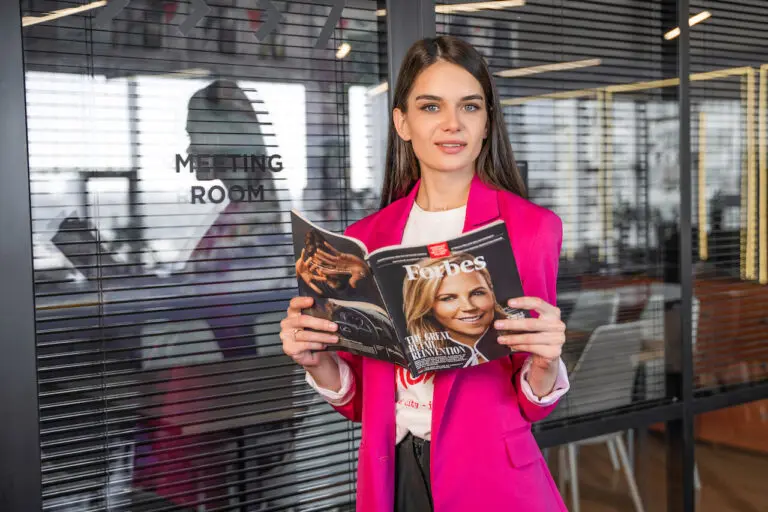Table of Contents
Introduction
Public relations has always been about getting the right message to the right audience, but the strategies to achieve this have evolved dramatically over time. One significant advancement is the PESO Model, which stands for Paid, Earned, Shared, and Owned media. This model, introduced by Gini Dietrich in her 2014 book “Spin Sucks,” has revolutionized PR strategies by integrating these different media types into a cohesive and comprehensive approach.
The PESO Model categorizes media into four distinct types: Paid, Earned, Shared, and Owned. By leveraging these different media types, PR professionals can maximize the reach and impact of their campaigns. This approach offers a holistic strategy, enhances credibility, increases reach, and provides measurable results.
Enhance your PR strategy with our expert PR agency for tech startups, and discover how the PESO Model can elevate your public relations efforts.
What is the PESO Model?

The PESO Model is a framework that categorizes media into four distinct types: Paid, Earned, Shared, and Owned. Introduced by Gini Dietrich in her 2014 book “Spin Sucks,” this model helps PR professionals leverage different media channels to maximize the reach and impact of their campaigns. Each type of media plays a unique role:
- Paid Media: Involves paid advertising efforts such as PPC ads and sponsored content.
- Earned Media: Gained through publicity efforts like media coverage and social media mentions.
- Shared Media: Content shared on social platforms, including user-generated content.
- Owned Media: Content controlled by the brand, like websites and blogs.
By integrating these four media types, the PESO Model provides a cohesive strategy that enhances credibility, extends reach, and ensures consistent messaging. This comprehensive approach allows PR professionals to effectively engage with their audience across various channels, creating a well-rounded and impactful PR campaign.
Pro Tip: Use consistent messaging across all four media types to reinforce your brand voice and enhance recognition.
Maximize Your PR Impact with the 2025 PESO Model
Ready to elevate your strategy? Let’s connect and make it happen.
Breaking Down the PESO Model
The PESO model in PR is a versatile framework that categorizes media into four distinct types: Paid, Earned, Shared, and Owned. By effectively understanding and utilizing each category, PR professionals can create a well-rounded strategy that maximizes impact and reach. Let’s take a closer look at each component.
Paid Media
Paid media refers to any media exposure that is purchased. This includes traditional advertising methods such as TV and radio ads and digital approaches like pay-per-click (PPC) ads and sponsored content. Paid media allows you to control the message and its distribution, ensuring it reaches your target audience precisely. Investing in paid media can boost your visibility and drive traffic to your owned and shared media channels.
Earned Media
Earned media is all about the publicity gained through efforts other than paid advertising. This includes media coverage, social media mentions, reviews, and word-of-mouth recommendations. Unlike paid media, earned media is not directly controlled by your brand, making it a powerful tool for building trust and credibility. When a third party talks about your brand, it often carries more weight with the audience. Securing earned media requires consistent effort in public relations and a knack for creating newsworthy stories.
Shared Media
Shared media encompasses content shared on social media platforms. This includes user-generated content, retweets, shares, and brand posts. Shared media helps amplify your message through community engagement and interaction. By fostering a strong social media presence, you can encourage your audience to share your content, significantly expanding your reach. This form of media relies heavily on building and nurturing a community that feels connected to your brand.
Owned Media
Owned media consists of any content or media that your brand controls. This includes your website, blog, email newsletters, and any other channels you fully own. Owned media allows complete control over the message, presentation, and timing. It’s the cornerstone of your PR strategy, providing a platform for consistent and sustained communication with your audience. High-quality owned media can be the foundation upon which you build your paid, earned, and shared media efforts.
Also Read: Understanding the PESO Model for Effective Media Strategy in 2025
The Benefits of the PESO Model in PR
Exploring the benefits of the PESO model in PR, we can see how this approach has revolutionized public relations strategies by integrating Paid, Earned, Shared, and Owned media. Let’s dive into why the PESO model is a game-changer and how it brings significant advantages to PR campaigns.
A Unified Strategy for Maximum Impact
One of the PESO model’s most notable benefits is its holistic approach. By combining Paid, Earned, Shared, and Owned media, PR professionals can create a cohesive strategy that ensures a unified message across all channels. This integration helps craft a well-rounded campaign that leverages the strengths of each media type, leading to a more impactful reach.
Building Trust with Enhanced Credibility
Combining paid and earned media effectively enhances credibility. While paid media allows for message control and targeted reach, earned media adds a layer of authenticity and trust. When a brand is mentioned positively in the news or by influencers, it gains credibility that paid media alone cannot achieve. This blend of controlled and organic exposure helps build a trustworthy brand image.
Amplifying Your Message
Shared and owned media play a crucial role in amplifying your message:
- Shared Media: Increases engagement and spreads your message through community interactions via social media posts and user-generated content.
- Owned Media: Provides a platform for detailed and consistent messaging on your blog or website, ensuring your message reaches a broader audience and maintains a lasting presence.
Measuring Success with Clear Metrics
The PESO model provides clear metrics to evaluate the effectiveness of PR efforts. Each media type comes with its own set of measurement tools:
- Paid Media: Tracked through ad performance metrics.
- Earned Media: Measured via media coverage and mentions.
- Shared Media: Analyzed through social media analytics.
- Owned Media: Monitored by website traffic and engagement statistics.
Pro Tip: Leverage analytic tools like Google Analytics or social media dashboards to measure and refine your strategies.

What is the Difference Between Paid, Earned, Shared, and Owned Media?
Understanding the differences between Paid, Earned, Shared, and Owned Media is key to mastering the PESO model in PR. Let’s explore each type and how they contribute to a comprehensive PR strategy.
Paid Media
Paid media involves paying for exposure on platforms owned by others. This category includes traditional advertising, pay-per-click (PPC) ads, and sponsored content. Investing in paid media gives you control over the message and its distribution. It’s like renting a billboard on a busy highway – paying for the space and the guaranteed audience.
Earned Media
Earned media is publicity gained through efforts beyond paid advertising. It can come from media coverage, social media mentions, reviews, or influencer endorsements. Earned media is often viewed as more credible because your brand does not directly control it. Think of it as word-of-mouth on a larger scale—people trust it because it’s an independent validation of your brand.
Shared Media
Shared media encompasses content shared on social media platforms, including user-generated content and brand posts. It relies heavily on community engagement and can significantly amplify your message. When users share your content, they become ambassadors for your brand. This is the digital age’s version of passing around a good book – it spreads organically and can reach a vast audience.
Owned Media
Owned media includes any content or media that your brand controls, such as your website, blog, and email newsletters. This is your brand’s home base, where you have complete control over the message and its presentation. Owned media provides a platform for consistent messaging and long-term engagement with your audience. It’s like having a storefront that you can design and operate exactly how you want.
Comparing Shared vs Earned Media
While both shared and earned media involve third-party interactions, they differ in control and origin. Earned media is about gaining recognition and validation from external sources, whereas shared media focuses on content distribution through social engagement. Both play crucial roles in enhancing your brand’s visibility and credibility, but through different pathways.
PESO vs Owned Asset Optimization
Optimizing your PR strategy involves balancing the PESO model with your owned assets. The PESO model provides a framework for leveraging different media types, while owned asset optimization ensures that your brand’s core messages and values are consistently communicated through your controlled channels. They create a robust and integrated PR approach that maximizes reach and impact.
Unlock Your PR Potential with the PESO Model
Ready to elevate your brand in 2025? Let our experts guide you through a proven PR strategy tailored just for you.
Implementing the PESO Model: A Step-by-Step Guide
The PESO model in PR provides a structured approach to integrating Paid, Earned, Shared, and Owned media into your public relations strategy. Here’s a detailed guide to help you implement this model effectively:
Step 1: Identify Your Target Audience and Define Your PR Objectives
Before diving into any media strategy, understanding your target audience is crucial. Who are they? What are their interests and behaviors? Use this information to set clear PR objectives. Whether it’s increasing brand awareness, driving website traffic, or boosting engagement, having specific goals will guide your strategy.
Step 2: Develop a Comprehensive Strategy
Your strategy should seamlessly integrate all four media types: Paid, Earned, Shared, and Owned. Consider how each type can support your objectives:
- Paid Media: Plan your advertising budget for PPC ads, sponsored content, and other paid channels.
- Earned Media: Develop pitches and press releases to gain media coverage and influencer mentions.
- Shared Media: Create a social media plan encouraging user-generated content and community engagement.
- Owned Media: Focus on producing valuable content for your website, blog, and email newsletters.
Step 3: Create High-Quality Content Tailored to Each Media Type
Content is the cornerstone of the PESO model. Tailor your content to fit the unique characteristics of each media type:
- For Paid Media: Develop compelling ad copy and visuals that capture attention quickly.
- For Earned Media: Craft engaging stories and press releases that resonate with journalists and influencers.
- For Shared Media: Produce shareable content like infographics, videos, and interactive posts encouraging engagement.
- For Owned Media: Create in-depth articles, guides, and resources that establish your brand as an authority in your industry.
Step 4: Distribute and Promote Your Content Across Various Channels
Effective distribution is key to maximizing the reach of your content. Use a mix of channels to ensure a broad audience sees your message:
- Paid Media Channels: Use platforms like Google Ads, social media ads, and sponsored placements.
- Earned Media Channels: Pitch your stories to relevant media outlets and collaborate with influencers.
- Shared Media Channels: Post regularly on social media platforms and engage with your community.
- Owned Media Channels: Publish content on your website, blog, and email newsletters.
Step 5: Measure the Impact and Adjust Your Strategy
Use relevant metrics to evaluate the effectiveness of your PR efforts. Key metrics include:
- Paid Media: Track ROI, click-through rates, and conversions.
- Earned Media: Monitor media coverage, backlinks, and influencer mentions.
- Shared Media: Analyze social media engagement, shares, and follower growth.
- Owned Media: Measure website traffic, time on page, and email open rates.
PESO Model Case Studies
Understanding the PESO model in PR is one thing, but seeing it in action highlights its effectiveness. Let’s dive into some compelling case studies that illustrate how the PESO model can drive successful public relations campaigns.
Dove’s #TheSelfieTalk Campaign
One of the standout examples of the PESO model in action is Dove’s #TheSelfieTalk campaign. This campaign brilliantly utilized shared media by encouraging women to share selfies with the hashtag #TheSelfieTalk. This user-generated content flooded social media platforms, creating an organic wave of engagement and amplification. By leveraging shared media, Dove connected with their audience personally, encouraging real conversations about self-esteem and beauty standards. The campaign’s success lies in its ability to harness the power of shared media to spread its message far and wide, demonstrating how effective the PESO model can be in creating a strong community-driven campaign.
Faroe Islands Maintenance Campaign
The Faroe Islands Maintenance Campaign is another excellent example showcasing the PESO model, particularly focusing on earned media. With a minimal budget, the Faroe Islands cleverly gained extensive media coverage by inviting volunteers to help “maintain” the islands, which included tasks like painting and path clearing. This unique approach captured the attention of media outlets worldwide, earning the Faroe Islands significant publicity without direct advertising costs. This case exemplifies how a well-strategized earned media approach can generate massive awareness and engagement, highlighting the credibility and reach that earned media can achieve within the PESO model framework.
The Ice Bucket Challenge
Another noteworthy example is the ALS Ice Bucket Challenge. This campaign primarily utilized shared media to raise awareness and funds for amyotrophic lateral sclerosis (ALS). Participants shared videos of themselves dumping ice water over their heads and challenged others to do the same or donate to ALS research. The viral nature of this campaign on social media platforms showcased the immense power of shared media in driving a cause. It also gained earned media through news coverage, further amplifying its reach. This case study illustrates how integrating shared and earned media within the PESO model can create a viral, impactful campaign that resonates globally.
Red Bull Stratos
Red Bull’s Stratos project, where Felix Baumgartner jumped from the edge of space, is a stellar example of combining all elements of the PESO model. Red Bull utilized paid media through sponsorships and advertisements, earned media by gaining extensive news coverage, shared media through social media buzz, and owned media by documenting the entire event on their platforms. This integrated approach captivated a global audience and reinforced Red Bull’s brand image as a daring and adventurous company. The Stratos project highlights how a comprehensive PESO strategy can elevate a brand’s presence and impact.
Pro Tip: Plan integrated campaigns where each PESO element complements the others to create a unified experience.
Maximizing PR Impact with the PESO Model
The PESO model in PR integrates Paid, Earned, Shared, and Owned media to create a powerful strategy. This approach boosts your reach and credibility, ensuring your message always hits the mark. Real-world examples like Dove’s #TheSelfieTalk and the ALS Ice Bucket Challenge show this model’s effectiveness.
By combining different media types, the PESO model offers a comprehensive way to manage public relations. It not only amplifies your message but also builds trust with your audience, making it a go-to strategy for PR professionals looking to make a significant impact.
The PESO model in PR is more than just a framework; it’s a game-changer. It allows you to tailor your campaigns for maximum effect, ensuring you get the best results possible. Ready to take your PR strategy to the next level?
Learning the ropes can be challenging for those looking to land major media coverage. Our guide on how to get featured in Entrepreneur Magazine offers insider tips and strategies.





